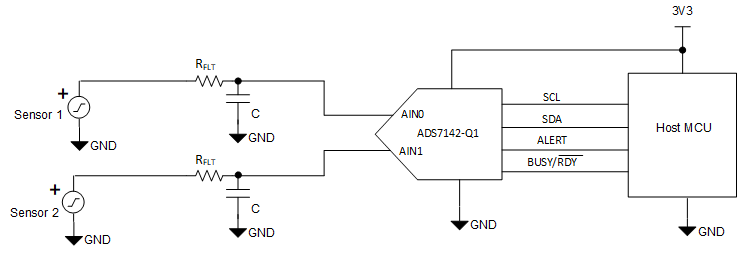SBAU321B November 2018 – June 2021 ADS7142 , ADS7142-Q1
1 Introduction
The ADS7142-Q1 BoosterPack™ is a fully-assembled evaluation platform designed to highlight the ADS7142-Q1 features and various modes of operations that makes this device suitable for ultra-low-power, small-size sensor monitor applications.
The accompanying Precision ADC Motherboard (PAMB) development kit is used as a USB-to-PC GUI communication bridge, and example implementation of a master MCU to communicate with the ADS7142-Q1 through its I2C interface.
The BOOSTXL-ADS7142-Q1 requires an external master controller to evaluate the ADS7142-Q1.
The PAMB is controlled by commands received from the ADS7142-Q1 GUI, and returns data to the GUI for display and analysis. If the PAMB is not used, the BoosterPack™ plug-in module format of the BOOSTXL-ADS7142-Q1 board allows an alternative external host to communicate with the ADS7142-Q1.
The BOOSTXL-ADS7142-Q1 incorporates all required circuitry and components with the following features:
- ADS7142-Q1 nano power, ultra-small, dual-channel sensor monitor with I2C interface and alert output
- Optional low power voltage reference, TI’s REF3133-Q1, to generate a 3.3-V output to power the ADS7142-Q1 AVDD supply pin when the 5-V USB power from the PAMB
- Optional adjustable linear regulator, TI’s TPS79933-Q1, to generate stable output voltage to power the ADS7142-Q1 DVDD pin when using the 5-V USB power from the PAMB
- I2C interface for communication and configuration of modes available on the ADS7142-Q1
Figure 1-1 shows the ADS7142-Q1EVM architecture, identifying the key components and blocks previously listed.
 Figure 1-1 ADS7142-Q1 EVM Block Diagram
Figure 1-1 ADS7142-Q1 EVM Block Diagram